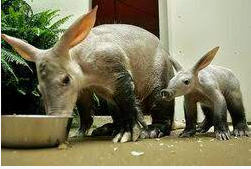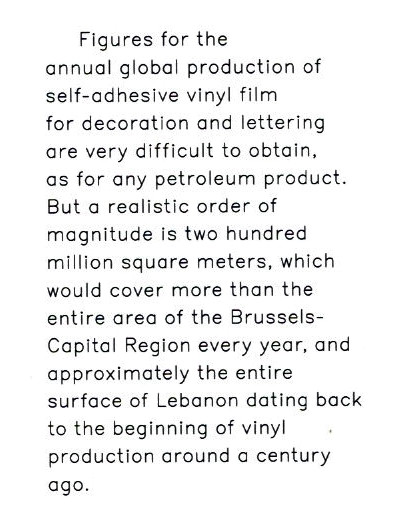Warning: this sociology paper by Mike Michael is a rabbit hole, leading to other rabbit holes - fascinating, occasionally hilarious & sometimes downright bizarre...
It's about what the author calls "lay metrology".
That's describing measurements in terms that are presumed to give lay people a sense of the proportion - like saying something's "twice the size of Wales"....
1/5
https://journals.sagepub.com/doi/full/10.1177/09636625231186782
...First I checked out the Wikipedia page to find out what metrology was: https://en.wikipedia.org/wiki/Metrology
In which I learned the first known standardized measure was the royal Egyptian cubit - the length of the Pharaoh's arm plus width of his hand. Standardizing managed to get the pyramids bang on....
Measuring by the body isn't unusual. There's the Smoot. From Michael's paper:
"The Smoot is the unit of length of 5 feet 7 inches equivalent to the height in 1958 of then student Oliver R. Smoot...
2/5

..."...who was used to measure the span of the Harvard Bridge (364.4 Smoots). Ironically, Smoots subsequently became the American National Standards Institute’s Chairman, and then the International Organisation for Standardisation’s (ISO) president. The Smoot, among other units, is (ironically) used by both Google Earth and Google Calculator."
The Smoot features in the Wikipedia List of humorous units of measurement, which Michael references:
https://en.wikipedia.org/wiki/List_of_humorous_units_of_measurement
3/5
...There I learned that donkey power is a third of horse power,
a Sheppey is the closest distance "at which sheep remain picturesque" (7/8 mile, if you want to know),
& a Muggeseggele is a Swabian reference to a housefly's private parts = a teensy tiny amount.
Finally, because I didn't know what Michael was referring to, I searched for "the London fatberg" (can't recommend!). Turns out it's a gross sewer obstruction - but also a good example of the weirdness of
journalist metrology....
4/5
...From The Guardian "at 820 feet, the fatberg was ‘longer than Tower Bridge’ or ‘twice as long as Wembley Stadium’ and ‘the weight of 11 double-decker buses’."
Michael argues we presume too much with all this, & a #scicomm research agenda is needed.
Here's the link to his paper again: https://journals.sagepub.com/doi/full/10.1177/09636625231186782
5/5
@hildabast
Avast New Zealand!
Is it time to abandon the metric system?
Some thought required. I mean, the sheppey be weighted by breed: a Marino sheppey could be less than a Romney...
@statsguy Ha!
The 2m advice is one of Michael's examples.
@hildabast 5'7" truly seems the perfect measure.
@AndresCaicedo @hildabast
Did you know that 5'8" is the same thing as 4'20"? I'm not short, I'm actually really high...
@hildabast Surely the plural of smoot should be smeet.
@hildabast Aaron Reich, the science writer at the Jerusalem Post, is a master of this. If there's an asteroid about to pass the Earth, he will find some truly bizarre point of size comparison, e.g. "182 beavers", "100 Barbie dolls", "45 aardvarks". "3500 Bg Macs", to name only his most recents ones.
@inanimatecarbongod @hildabast there are another set of standards for this - the EL Reg units.
However for celestial bodies the largest volume unit the 'Olympic swimming pool' is still a bit small so I expect we would need to invoke k, m, g and t multipliers as well.
They also have walnuts, grapefruit, chicken's eggs and footballs.
The weight measures are a bit more exotic: badgers, great white sharks, skateboarding rhinos, Australian trams and LINQ hotel recycling.
https://www.theregister.com/Design/page/reg-standards-converter.html
@marjolica @inanimatecarbongod @hildabast Speaking as a sauropod palaeontologist, I genuinely find it absolutely routine to express masses in elephants.
@inanimatecarbongod @hildabast it's a form of art
@inanimatecarbongod @hildabast OMG, aardvarks are a thing, an animal, I mean. I always thought that was a made up word. (Sorry, not native in English.)
@inanimatecarbongod @hildabast I saw an article from NASA which mentioned an asteroid "the size of 14 flamingos".
As an Australian, I wanted to know the measurement in my local units so I asked how many cassowaries that was.
@hildabast thank you for this delightful rabbit hole. I love now knowing the words metrology and metrosophy and that someone exists who studies such things.
@hildabast @nyrath A while ago, NASA's public communications staff sent around a press release recommendation that I paraphrase as "Include size comparisons for unfamiliar objects. Maybe try animals?".
Which has led to things like people comparing a meteoroid to a corgi and a spacecraft to a cow.
Addendum: I now read that multiple other people have already noted this pattern.
@hildabast When my dad was a young engineer in the '50s it was fashionable to memorize conversion factors for some particularly obscure unit, & then when called on in meetings, present your comments in your favored units.
His preference for velocity was furlongs per fortnight. (I gather that was actually a pretty popular one.)
@hildabast No mention of Olympic size swimming pools, giraffes or Jack Russell Terriers!!!
@hildabast I saved your post last year to come back to, and thought of it again today when I read this in the Publi Fluor book. (Alt text contains a transciption of the paragraph from the book pictured.)
The use of Brussels isn't completely surprising, as the book is located in the city, but Lebanon felt a bit random.
For more on the book/project, take a look at the bl.ag online article here: https://bl.ag/peeling-back-the-layers-of-chrystel-crickxs-typographic-legacy/




